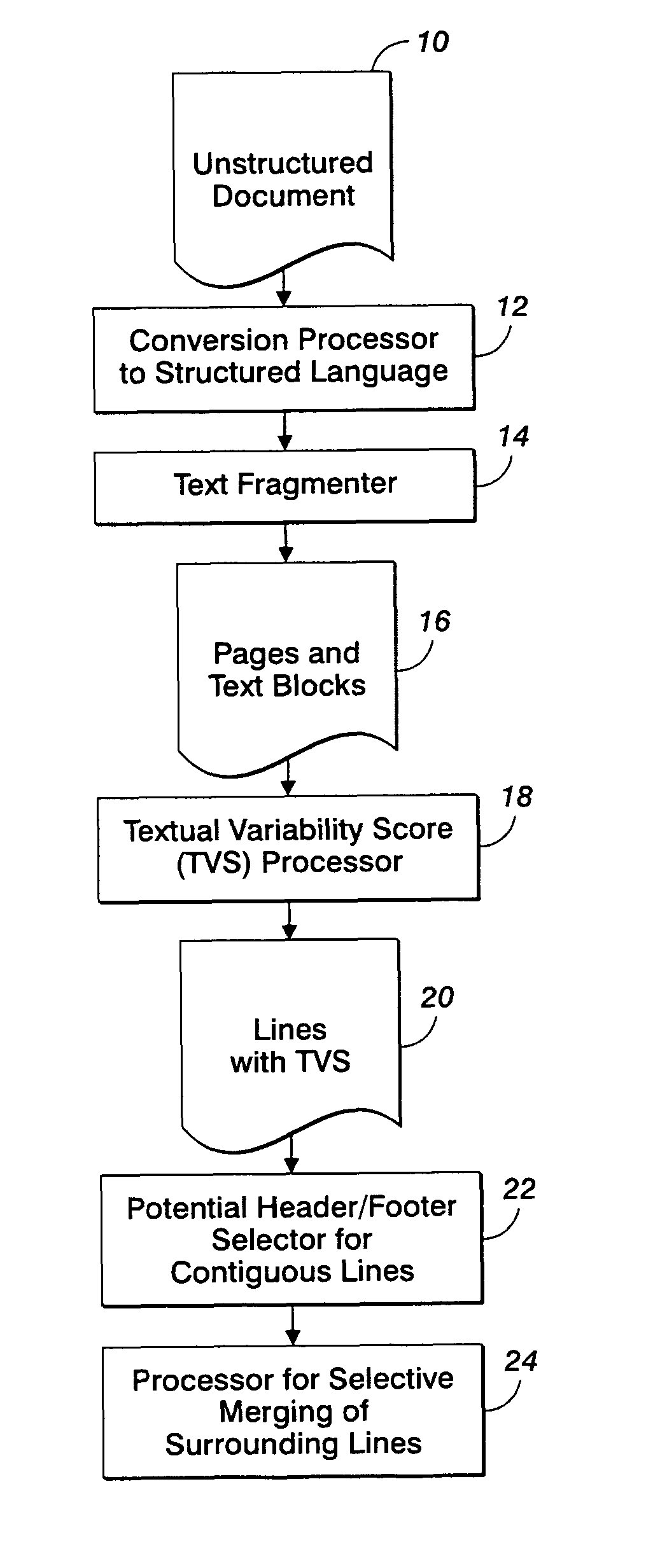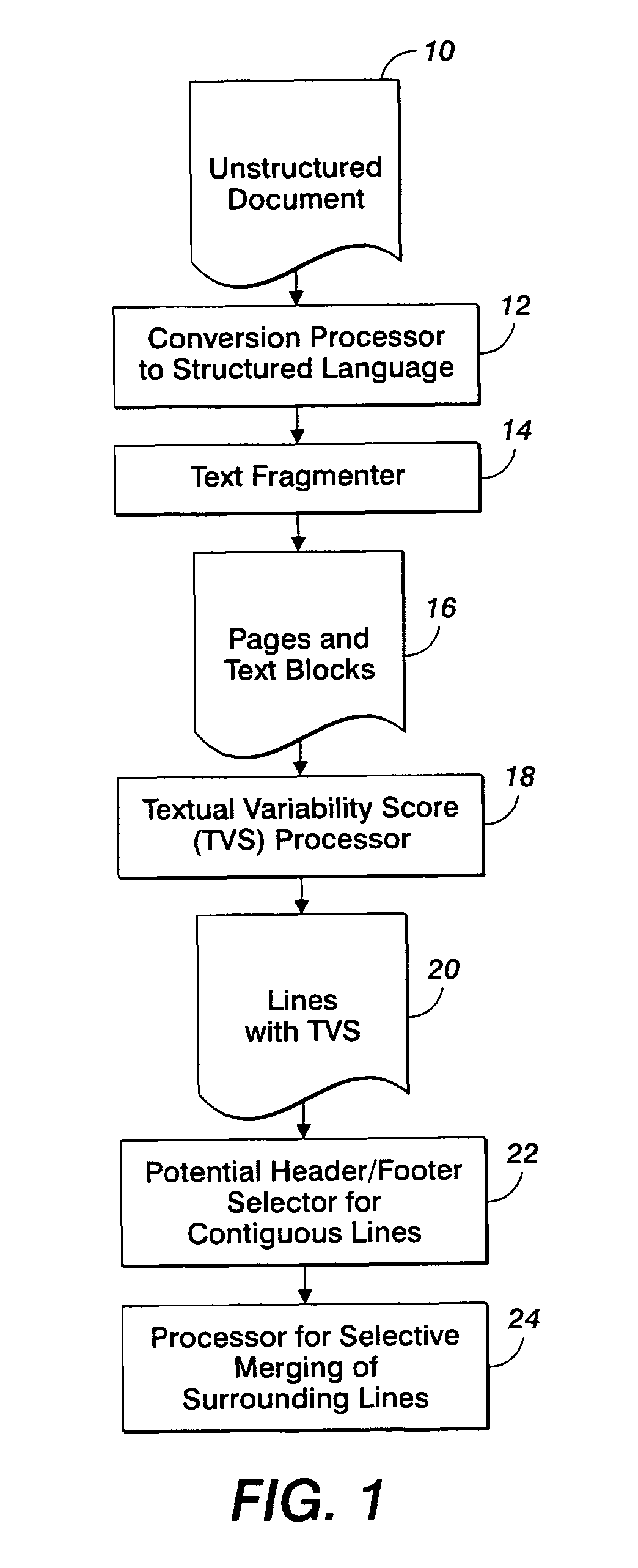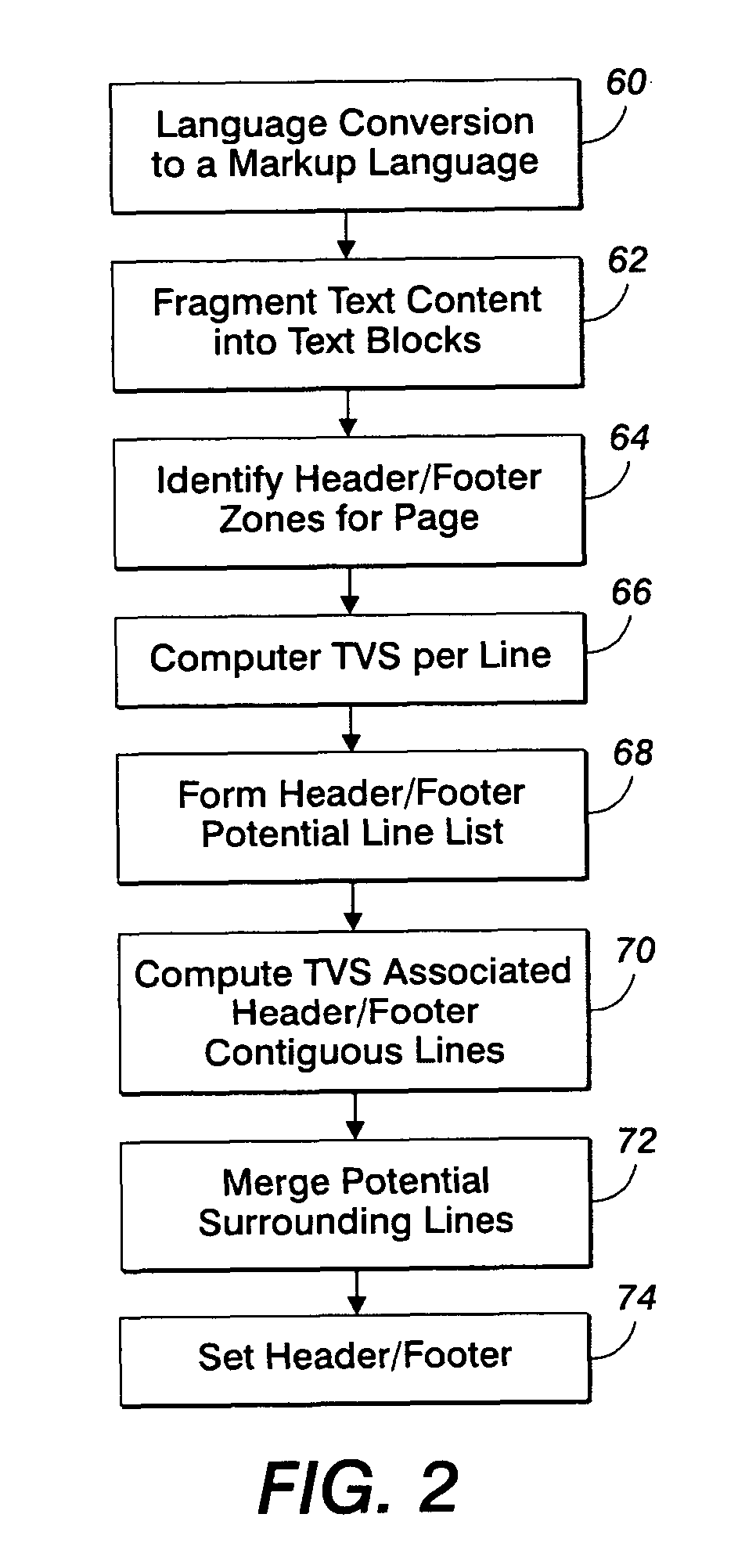Method and apparatus for detecting pagination constructs including a header and a footer in legacy documents
a pagination and legacy document technology, applied in the field of information storage and processing arts, can solve the problems of affecting the flow of main text, affecting the content of legacy documents, so as to facilitate content-based processing and text content variability
- Summary
- Abstract
- Description
- Claims
- Application Information
AI Technical Summary
Benefits of technology
Problems solved by technology
Method used
Image
Examples
Embodiment Construction
[0018]The subject embodiments have an overall purpose of detecting a zone at the top of a page of a document and at the bottom of a page of a document, which corresponds to a pagination construct such as a header or footer zone. Efficient characterization of such zones as shown herein, use the following heuristic: In a header or footer zone, the textual variety is much lower than in the body page of the document. The illustrated embodiments for header / footer detection may comprise at least four steps:[0019]1. position allocation,[0020]2. text normalization,[0021]3. textual variability computation, and[0022]4. header / footer zone detection.
[0023]These steps, and others, will be described in detail with reference to the drawings and wherein FIG. 1 shows an assembly wherein an unstructured document 10, e.g., a technical manual or the like in a PDF format, is converted by conversion processor 12 into an alternative language format such as XML, and when in such format can be processed for...
PUM
 Login to View More
Login to View More Abstract
Description
Claims
Application Information
 Login to View More
Login to View More - R&D
- Intellectual Property
- Life Sciences
- Materials
- Tech Scout
- Unparalleled Data Quality
- Higher Quality Content
- 60% Fewer Hallucinations
Browse by: Latest US Patents, China's latest patents, Technical Efficacy Thesaurus, Application Domain, Technology Topic, Popular Technical Reports.
© 2025 PatSnap. All rights reserved.Legal|Privacy policy|Modern Slavery Act Transparency Statement|Sitemap|About US| Contact US: help@patsnap.com



